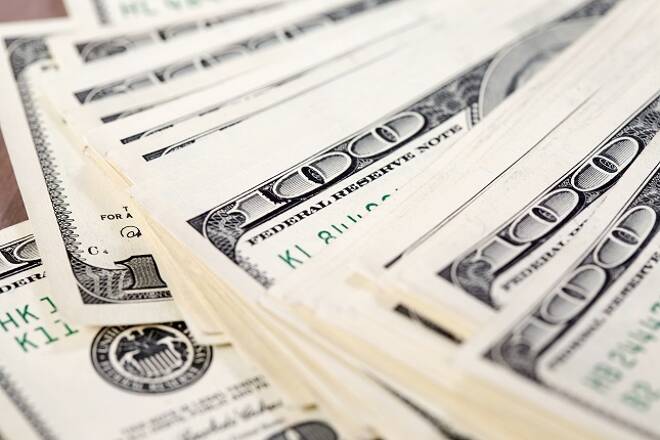Advertisement
Advertisement
Japanese Economy Slumps as the Dollar Roars
By:
Economic data out of Japan and Australia disappointed early as the markets now look ahead to the EUR, with inflation figures and Draghi to direct the EUR ahead of the U.S session.
Earlier in the Day:
Economic data released through the Asian session this morning included Japan’s 1st quarter GDP and March finalized industrial production figures, together with 1st quarter wage growth and May consumer sentiment numbers out of Australia.
For the Japanese Yen, the economy contracted for the first time in 4 years in the 1st quarter, bringing to an end the longest stretch of growth since the 1980s, the contraction widely expected following some lacklustre stats, with domestic consumption continuing to weigh on growth.
Quarter-on-quarter, the economy contracted by 0.2% in the 1st quarter following a downwardly revised 0.1% growth in the 4th, while year-on-year, the economy contracted by 0.6% following the 4th quarter’s downwardly revised 0.6% growth.
Export growth slowed in the 1st quarter, with capital expenditure falling, which will raise some concerns over business sentiment. Unsurprisingly, consumer spending also slipped.
While expectations are for the economy to recover from the 1st quarter slowdown, how the U.S and China progress on trade and perhaps more importantly, how the U.S administration views trade terms with Japan will be key to any recovery.
The Japanese Yen moved from ¥110.247 to ¥110.321 upon release of the figures that came ahead of the finalized March industrial production figures.
Industrial production rose by 1.4% in March, according to finalized figures, coming in ahead of a forecasted and prelim 1.2%, whilst affirming a slowdown from February’s 2% increase.
The Japanese Yen moved from ¥110.281 to ¥110.253 against the Dollar upon release of the figures, the Yen up 0.09% against the Dollar for the morning.
For the Aussie Dollar, economic data through the morning failed to impress.
The Westpac Consumer Sentiment fell by another 0.6% in May, following April’s 0.6% decline.
In spite of the government’s friendly budget, sentiment has been on a downward trend, raising concerns over domestic consumption, with wage growth remaining soft.
The Aussie Dollar moved from $0.74749 to $0.7474, relatively non-responsive ahead of the wage growth figures.
Wages grew by 0.5% in the 1st quarter, as reported by the ABS, falling short of a forecasted 0.6% rise, following the 4th quarter’s downwardly revised 0.5% rise.
The continued weakness in wage growth will raise further concerns amongst members of the RBA on the outlook for household spending, with the latest consumer sentiment numbers timely for the doves.
The Aussie Dollar moved from $0.74737 to $0.7455 upon release of the figures before recovering to $0.7473 at the time of writing, up 0.01% for the session.
In the equity markets, it was a mixed bag, the ASX200 bucking the trend, up 0.42% at the time of writing, while the Hang Seng and CSI300 were down 0.11% and by 0.30% respectively, while the GDP numbers out of Japan offset the effects of a softer Yen on export stocks, with the Nikkei down 0.22%.
The Day Ahead:
For the EUR, it could go from bad to worse this morning, with finalized April inflation figures scheduled for release out of Germany and the Eurozone.
Focus will be on the Eurozone’s monthly number, which is forecasted reflect a 0.3% rise in consumer prices, down from March’s 1%.
Outside of the data, ECB President Draghi is scheduled to speak in what has been a particularly busy week for central bankers. Unlike his peers across the Pond, Draghi is unlikely to deliver a hawkish outlook on policy, with the disappointing 1st quarter GDP numbers and softer inflation through the 1st quarter reasons for the ECB to continue on its current road to normalization, which is likely to be a long one.
At the time of writing, the EUR down 0.05% to $1.1832, with $1.17 levels certainly in play this week, though the talk of parity has yet to start doing the rounds.
For the Pound, it’s a quiet day ahead, following Tuesday’s employment and wage growth figures. The figures will be of little comfort for the day ahead, in spite of the Pound managing to hold on to $1.35 levels by the close on Tuesday, the continued inflation overshoot and lack of a pickup in wage growth expected to weigh further on domestic consumption.
At the time of writing, the Pound was up 0.03% to $1.3506, the Pound finding some support at current levels.
Across the Pond, it’s another busy day for the Dollar. Economic data scheduled for release includes April industrial production and housing sector data, with industrial production numbers likely to be the key area of focus.
With the Dollar resurgence finding new vim this week, supported by solid retail sales figures and hawkish FOMC member commentary, FOMC member Bostic will provide further direction this afternoon.
At the time of writing, the Dollar Spot Index up 0.05% to 93.267, with updates from U.S – China trade talks also likely to be of some influence.
Across the border, economic data out of Canada is limited to March manufacturing sales figures that will provide some direction for the Loonie, though NAFTA chatter will be of greater relevance through the day, Thursday’s soft deadline looming.
At the time of writing, the Loonie was up 0.14% to C$1.2859 against the U.S Dollar, with Trudeau’s Trump skills being put to the test.
About the Author
Bob Masonauthor
With over 28 years of experience in the financial industry, Bob has worked with various global rating agencies and multinational banks. Currently he is covering currencies, commodities, alternative asset classes and global equities, focusing mostly on European and Asian markets.
Did you find this article useful?
Latest news and analysis
Advertisement
